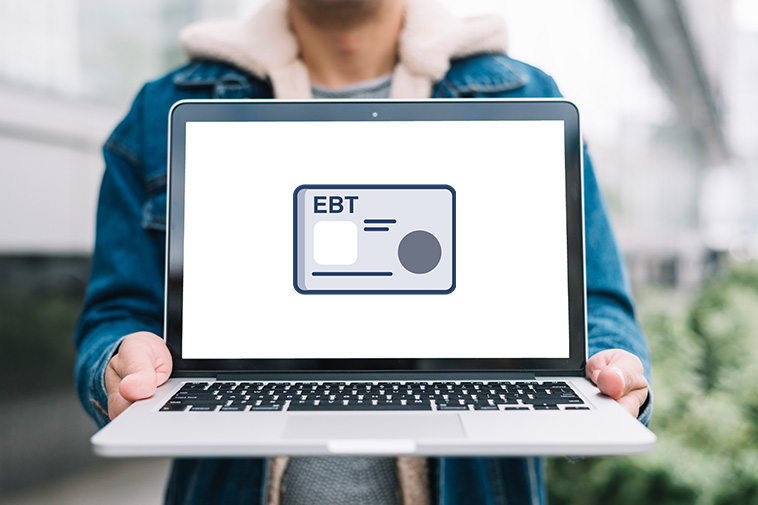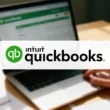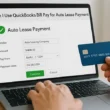Free laptop for low income families, earners, or college students from government and other assistance providers can make a big difference. But, is it possible to get a laptop for free? Yes, it is and here in this post we will going to find how.
Low-income families often face challenges in accessing technology like laptop, mobile, tablets, which can hinder educational and job opportunities.
Fortunately, there are various government programs and assistance initiatives designed to help you secure a free laptop.
In this guide, we will explore the resources available to you, including eligibility criteria and application processes. It helps you to bridge the digital divide and enhance your learning and career prospects.
Eligibility Requirements to Get a Free Laptop from Government
To successfully obtain a free laptop through government programs and assistance, it’s important to understand the eligibility factors that are considered.
Various criteria are evaluated to determine whether you qualify, which can include your income level, family size, and any special needs or disabilities you or your family members might have.
Income Requirements
One key factor that will determine your eligibility for a free laptop is your income.
Generally, government assistance programs have specific income thresholds that are based on the federal poverty guidelines. You will need to provide documentation of your income, including pay stubs, tax returns, or any other relevant financial records to prove that your household income falls below the specified limits.
Family Size and Composition
If you’re applying for assistance, the size of your family are crucial considerations. Programs may have different eligibility based on how many individuals reside in your household.
Typically, the larger your family, the higher your income limit may be, allowing for more comprehensive support options. You will need to present documents that verify your family size, such as birth certificates for children, Social Security numbers, or household bills that show everyone residing at your address.
Factors like custodial arrangements or additional dependents may also influence your application positively, as most programs aim to support as many individuals as possible in low-income situations.
Special Needs and Disabilities
If you or a family member has a disability that impacts daily living or educational needs, you may qualify for additional resources including free laptops.
Documentation like a doctor’s note or an individualized education plan (IEP) may be required to substantiate your claims.
Factors determining eligibility may vary greatly among programs. Some may offer specific provisions for families with disabilities, while others may focus more heavily on financial metrics.
Understanding all aspects of your situation can help you make a stronger case for the free laptop assistance you need.
Free Laptop from Government Programs
There’s a variety of government programs designed to assist low-income families in accessing technology, including free laptops. These resources are important in ensuring that everyone has equal opportunities.
Understanding these programs can be the first step in obtaining the laptop you need for education or job searching.
National School Lunch Program (NSLP)
Some families that qualify for the National School Lunch Program (NSLP) may also find their students eligible to get free laptop assistance from government.
The NSLP provides nutritionally balanced meals to children from low-income households, but it has expanded to offer a variety of educational resources.
Many schools, recognizing the importance of technology in learning, have implemented programs that provide free or reduced-cost laptops to students who are enrolled in the NSLP.
Some states and local school districts partner with nonprofit organizations to distribute laptops to eligible students.
By simply applying or renewing your application for the NSLP, you could potentially unlock opportunities for your child to receive a laptop that aids their educational journey.
Always check with your school district for specific details on availability and eligibility.
Note: The National School Lunch Program (NSLP) itself does not directly offer free laptops to low-income families. The NSLP focuses on providing free or reduced-cost meals to children in schools.
However, participation in the NSLP can make families eligible for other programs and resources that provide free or discounted laptops.
Supplemental Nutrition Assistance Program (SNAP)
Some families who are recipients of the Supplemental Nutrition Assistance Program (SNAP) may also qualify for free laptops through various programs.
SNAP is designed to assist low-income households in purchasing food and promoting nutritional health.
Some grant programs and local initiatives work in tandem with SNAP to provide low-income families with the necessary technology. By confirming your SNAP eligibility, you can explore options for accessing laptops and educational resources that make a significant difference in your children’s academic performance.
A variety of local programs collaborates with SNAP to increase access to devices and internet services. This assistance can vary by region and may involve partnerships with technology companies or local nonprofits.
You can start by checking with your local SNAP office or researching community programs that support families in need of technological resources.
Temporary Assistance for Needy Families (TANF)
Even families receiving assistance through the Temporary Assistance for Needy Families (TANF) program may find opportunities for acquiring free laptops.
TANF aims to support low-income families with children by providing financial assistance for basic needs, including food, shelter, and education.
In recent years, some programs have started linking TANF eligibility with access to technology, including laptops that can be critical for online learning and job searches.
Various state and local programs may have initiatives or partnerships offering devices to TANF recipients. Checking in with your caseworker or local community service providers could reveal specific opportunities you might qualify for.
The Federal Pell Grant
The Federal Pell Grant Program, primarily known for providing financial aid to low-income college students, offers more than just tuition assistance.
In some cases, the funds from a Pell Grant can be used to cover essential educational expenses, including laptops. This is particularly beneficial for students who need a computer for their coursework but cannot afford one.
To take advantage of this opportunity, students should first ensure they are eligible for a Pell Grant by completing the Free Application for Federal Student Aid (FAFSA). Once awarded, they can check with their school’s financial aid office to see if their grant funds can be allocated towards the purchase of a laptop, thereby helping to bridge the digital divide and support their academic success.
Department of Education Initiatives
Title I Funding: Provides financial assistance to local educational agencies and schools with high numbers or high percentages of children from low-income families. Some schools use Title I funds to purchase laptops for students.
Elementary and Secondary School Emergency Relief (ESSER) Fund: Part of the CARES Act, this fund provides emergency relief funds to address the impact of COVID-19 on schools. Some districts have used ESSER funds to buy laptops and other technology for students.
Gaining Early Awareness and Readiness for Undergraduate Programs (GEAR UP): Designed to increase the number of low-income students who are prepared to enter and succeed in postsecondary education. Funds from GEAR UP grants can be used for purchasing educational technology, including laptops.
Educational Technology State Grants: Provides funding to enhance educational technology and improve student achievement. Some of these grants can be used to purchase laptops and other digital devices.
Community Eligibility Provision (CEP): While primarily focused on providing free meals, schools participating in CEP can allocate funds saved from reduced administrative costs towards technology and laptops for students.
Innovative Approaches to Literacy (IAL) Program: Supports high-quality programs designed to develop and improve literacy skills for children and students. Funds can be used for digital reading materials and devices like laptops.
Local School District Programs
New York City Department of Education: The NYC DOE has distributed hundreds of thousands of internet-enabled iPads and laptops to students in need to facilitate remote learning.
Los Angeles Unified School District (LAUSD): LAUSD has provided Chromebooks and internet access to students who lack the necessary technology for remote learning.
Chicago Public Schools (CPS): CPS has launched initiatives to ensure that all students have access to a device and internet connectivity, including distributing laptops and tablets.
Miami-Dade County Public Schools: This district has a one-to-one device program to provide every student with a laptop or tablet for educational use.
Houston Independent School District (HISD): HISD has implemented programs to distribute laptops to all high school students and expanded the program to include younger students as well.
Dallas Independent School District: Dallas ISD provides technology devices to students through their one-to-one initiative, ensuring each student has access to a laptop or tablet.
San Francisco Unified School District (SFUSD): SFUSD has distributed Chromebooks and internet hotspots to students who need them for distance learning.
Detroit Public Schools Community District (DPSCD): DPSCD has provided tablets and laptops to students, along with internet access, to ensure all students can participate in online learning.
How to Apply for Free Laptop from Government?
Keep in mind that applying for government assistance can be a straightforward process if you know what steps to follow.
You need to ensure you have a clear understanding of the required documentation and the application procedures for various programs aimed at providing free laptops to low-income families.
Each program may have specific eligibility requirements, so familiarize yourself with the options available in your state or locality.
Step1: Collect Required Documents
To get a laptop for free with a government assistance, you must first gather all required documents. These typically include proof of income, such as pay stubs or tax returns, identification documents like a driver’s license or social security card, and any relevant residency documentation.
It’s important to have both physical and digital copies readily available, as applications may require you to upload documents online or submit them via mail.
Besides that, you should compile information that illustrates your family’s needs, such as enrollment in a government assistance program or letters from a school indicating your child’s requirements for a laptop.
Having these documents organized will save you time and prevent delays in your application process.
Step2: Fill Out Application Forms
An necessary step in the application process is filling out the required forms accurately. Be sure to read each question carefully and provide honest answers.
If a program has an online application, take your time to ensure you complete all sections to avoid common pitfalls such as missing information or typographical errors. If you are filling out a paper form, use clear handwriting and avoid leaving any fields blank unless specified.
A great approach to ensure accuracy is to review the completed application with a friend or family member before submission. This extra set of eyes can help catch mistakes you might have overlooked and can offer suggestions or clarifications needed for certain answers.
When finished, double-check all documents to ensure all required paperwork is included before moving to the next step.
Step3: Submit Applications and Following Up
On completion of your application, the next step is submitting it as instructed by the program.
Whether you are applying online or by mail, be sure to note any confirmation numbers or receipts you receive as these are necessary for tracking your application.
After submission, it’s vital to follow up to ensure your application has been received and is being processed, especially if you don’t receive confirmation within a reasonable time frame.
Many programs have specific timelines for processing application forms, so informing yourself about these timelines allows you to plan accordingly and maintain a proactive approach.
How to Get a Free Laptop with EBT?

While the Electronic Benefits Transfer (EBT) program itself does not directly provide free laptops, there are ways for EBT cardholders to obtain free or discounted laptops through various programs and organizations. Here’s a guide on how to get a free laptop if you have EBT:
PCs for People
- Provides refurbished computers and internet services to low-income individuals, including those with EBT benefits.
EveryoneOn
- Connects low-income families to affordable internet service and computers. They work with partners to offer free or discounted laptops.
Human-I-T
- Offers low-cost refurbished laptops and internet services to low-income individuals, including EBT recipients.
Computers with Causes
- Provides donated computers to individuals and families in need, including those receiving EBT benefits.
The On It Foundation
- Provides free computers to students in grades K-12 who are eligible for free or reduced lunch, which may include EBT recipients.
TechSoup
- Offers discounted technology and software to nonprofits and eligible individuals. While primarily for organizations, they sometimes have resources for individuals.
Goodwill’s Computer Recycling Program
- Some Goodwill locations offer discounted or free refurbished laptops to low-income individuals. Check with local Goodwill stores for availability.
Local Community Action Agencies
- Some community action agencies have technology programs that include distributing free or discounted laptops. Contact local agencies for information on available programs.
Local School District Programs
- Many school districts have programs to provide laptops to students from low-income families. EBT cardholders may qualify if they have children enrolled in these districts.
To Wrap Up
To wrap up, the process of obtaining a free laptop for low-income families can seem daunting, but various government programs and assistance initiatives are in place to help you.
It’s necessary to stay informed about available resources and to communicate with local agencies that can provide guidance on the application process. With perseverance and a proactive approach, you can secure a free laptop that will significantly enhance your educational and professional opportunities.







